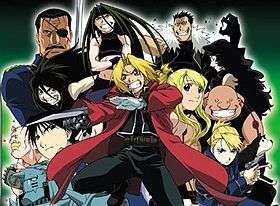Please tell us which country and city you'd like to see the weather in.
Mrsać
Mrsać is a village situated in Kraljevo municipality in Serbia.
References
Coordinates: 43°45′N 20°34′E / 43.750°N 20.567°E / 43.750; 20.567

Methicillin-resistant Staphylococcus aureus
Methicillin-resistant Staphylococcus aureus (MRSA) (/ɛmɑːrɛseɪ/ or /ˈmɜːrsə/) is a bacterium responsible for several difficult-to-treat infections in humans. It is also called oxacillin-resistant Staphylococcus aureus (ORSA). MRSA is any strain of Staphylococcus aureus that has developed, through the process of natural selection, resistance to beta-lactam antibiotics, which include the penicillins (methicillin, dicloxacillin, nafcillin, oxacillin, etc.) and the cephalosporins. Strains unable to resist these antibiotics are classified as methicillin-sensitive Staphylococcus aureus, or MSSA. The evolution of such resistance does not cause the organism to be more intrinsically virulent than strains of S. aureus that have no antibiotic resistance, but resistance does make MRSA infection more difficult to treat with standard types of antibiotics and thus more dangerous.
MRSA is especially troublesome in hospitals, prisons, and nursing homes, where patients with open wounds, invasive devices, and weakened immune systems are at greater risk of nosocomial infection than the general public. MRSA began as a hospital-acquired infection, but has developed limited endemic status and is now sometimes community-acquired and livestock-acquired. The terms HA-MRSA (healthcare-associated MRSA), CA-MRSA (community-associated MRSA) and LA-MRSA (livestock-associated) reflect this distinction.
2-Ketoarginine methyltransferase
2-Ketoarginine methyltransferase (EC 2.1.1.243, mrsA (gene)) is an enzyme with system name S-adenosyl-L-methionine:5-carbamimidamido-2-oxopentanoate S-methyltransferase. This enzyme catalyses the following chemical reaction
The enzyme is involved in production of the rare amino acid 3-methylarginine.
References
External links

List of Fullmetal Alchemist characters
The Fullmetal Alchemist manga and anime series feature an extensive cast of fictional characters created by Hiromu Arakawa. The story is set in a fictional universe within the 20th Century in which alchemy is one of the most advanced scientific techniques. Although they basically start the same, the first anime, midway through its run, begins to differ greatly from the original manga; characters that are killed early on in the manga survive to the end of the first anime and vice versa. The second anime's (Fullmetal Alchemist: Brotherhood) events, however, faithfully follow those from the manga.
The story follows the adventures of two alchemist brothers named Edward and Alphonse Elric. While trying to revive their mother, the brothers lost parts of their bodies, with Alphonse's soul being contained in a suit of armor, and Edward replacing his right arm and left leg with two sets of automail, a type of advanced prosthetic limb. Advised by Roy Mustang, an alchemist from the State Military, Edward becomes a State Alchemist, and starts traveling with Alphonse through the country of Amestris in order to find a way to recover their bodies. In their search, they hear of the Philosopher's Stone, a powerful alchemy artifact that the brothers can use to recover their bodies. However, after becoming a State Alchemist, Edward discovers that several members of the military are also attempting to get the stone, most notably humanoid creatures known as homunculi, who start chasing the Elric brothers.

Farkle
Farkle, or Farkel, is a dice game that has also been called or is similar to 1000/5000/10000, Cosmic Wimpout, Greed, Hot Dice, Squelch, Zilch,Zonk, or Darsh to name but a few. Its origins as a folk game are unknown, but it has been marketed commercially since 1982, since 1996 under the brand name Pocket Farkel by Legendary Games Inc. While the basic rules are well-established, there is a wide range of variation in both scoring and play, as described below.
Equipment
Play
Farkle is played by two or more players, with each player in succession having a turn at throwing the dice. Each player's turn results in a score, and the scores for each player accumulate to some winning total (usually 10,000).

List of Soul characters
A comprehensive list of characters from the Soul series of fighting games produced by Namco.
Overall conception and development
The Soul series is a weapon-based fighting game franchise developed by Namco Bandai's Project Soul division and consists of eight games: Soul Edge, Soulcalibur, Soulcalibur II, Soulcalibur III, Soulcalibur Legends, Soulcalibur IV, Soulcalibur: Broken Destiny and Soulcalibur V. Set in the 16th century, the plot of the games revolve around Soul Edge, a cursed sword able to possess its wielder and devour souls. Its sprit is called Inferno, and his avatar/host is called Nightmare. Soul Calibur, a holy sword and Soul Edge's antithesis, also has a spirit called Elysium.
Characters
With each character, their weapon was decided upon before other aspects were. The design was then built to revolve around it, starting with gender, then physical measurements, and lastly background details. Once established, appearance and movement were fleshed out by the team's concept artist and rendered as a 3D model by a design team that worked solely on the character. The completed model was then animated by a motion capture artist working directly with the team. During this phase the team additionally worked with the story creators, refining the character's own role in the plot as needed throughout development. In the course of the series, two characters have been an exception to the process: Johan Druer, a berserker exclusive to the Soulcalibur Japanese player's guide, and Necrid, a character co-produced with Todd McFarlane that appears in Soulcalibur II.
Radio Stations - Mrsać
SEARCH FOR RADIOS
Podcasts:

